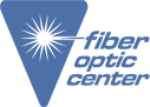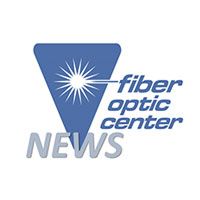Product Demonstrations and Technical Discussion Schedule Released
New Bedford, MA, USA – August 22, 2025 – Fiber Optic Center, Inc., (FOC), an international leading distributor specializing in helping their customers make the best cable assemblies in the world, announces participation at ECOC, September 29 – October 1, 2025, Bella Center Copenhagen, Denmark
The European Conference on Optical Communication (ECOC) is Europe's premier event for Fiber Optic Communication Technology. It serves as the largest industry exhibition, uniting professionals from across the sector for networking, business development, and insightful discussions.
Fiber Optic Center technical experts will be available to provide insights and recommendations, drawing from their extensive experience and proven techniques at stand C2513. Attendees can schedule here for one-on-one technical discussions with the Fiber Optic Center technical experts including the EMEA technical team and daily product demonstrations.
Lapping film samples are available at stand C2513 including Diamond, Aluminum Oxide, Silicon Carbide, Flock Pile, Final Films and more. Consultation provided on polishing process best practices and tips for the lapping film options. Consultation provided on polishing process best practices and tips for the lapping film options.
Epoxy and adhesives offered by Fiber Optic Center include premium materials sourced from top brands that are essential for long-term reliability of optical connections. Explore our selection of room temperature cure, extended use/heat cure, quick cure field termination adhesives, UV cure adhesives, and specialty adhesives below. Additionally, we offer an extensive range of epoxy dispensing supplies, including syringes, tips & end caps, pistons, and barrels.
Kelly Barker, Fiber Optic Center Epoxy Consultant, will be at stand C2513 for both epoxy and optical plastics material property comparisons, application consultation and recommendations. Epoxy samples, based on these consultations, will be immediately available to be shipped.
Depending on application needs, different sample types of epoxies are offered including but not limited to:
- OP-29-3ML: a UV light cure adhesive, one component, medium viscosity for gap-filling, no solvents added, clear liquid, adhesion to glass and metals
- OP-29-GEL-3ML: UV light cure adhesive, one component, gel viscosity for minimum movement after dispensed, no solvents added, optically clear gel
- TB302-50ML: fast room temperature cure epoxy for rapid assembly, used for potting and encapsulation of electrical and electronic components and fiber optic splits
Fiber optic termination epoxies:
- AB9123EP-2.5G: a low viscosity, high Tg, rapid heat cure epoxy and extended working life of 7-8 hours, for fiber optic termination.
- AB9112-2.5G: a low stress room temperature cure epoxy
- AB9123-2.5G: a high temperature heat cure epoxy, high TG, withstands high humidity, excellent temp cycling, passes GR-326 and Telcordia
- AB9110LV-2.5G: a crystal clear, low viscosity epoxy, low stress for PM and Plastic fiber and cryogenic applications
- AB9320-2.5G: a low stress heat cure epoxy designed for terminating multimode and single mode fibers, passes NASA low outgassing
Also at stand C2513 will be Fluid Dispensing Machines, Centrifuges and Domaille’s CO-6700 Programmable Epoxy Curing Oven with MT Tray and information on the latest UV curing spot lamps. If you’re unable to attend the show, Epoxy samples can be requested here on our website.
Equipment
In addition to the full cable assembly line being demonstrated at stand C2513, the following equipment is being showcased:
- Domaille APM-HDC-2500 Fiber Optic Polishing Machine provides for basic fiber optic polishing needs with high quality output. Its touchscreen interface ensures ease of use, offering many essential options for polishing all connector types, storing up to nine polishing processes and five polishing steps.10-200 RPM platen speed with feedback control and a force calibration option included.
- Domaille CO-6700 Programmable Cure Oven is a universal epoxy cure oven for single and multi-fiber connectors. The modular carry tray allows for loading up to 24 MT connectors or 48 single fiber connectors per batch. CO-6700 has three modes of curing operations, including Temperature, Timed and Step & Ramp and is compatible with DE Data Link™.
- Viavi MAP Multiple Application Platform Test System, for labs and manufacturing, enables scalability and efficiency for manufacturing optical network elements, modules, and components. Includes the industry’s largest selection of hot-swappable modules for optical communications test and measurement in lab and manufacturing environments.
- AFL One Click, Ferrule Cleaner (SC/ST/FC) is an easy-to-use option for cleaning connectors on jumpers and in adapters by simply inserting the One-Click Cleaner into an adapter and pushing until an audible “click” is heard. The One-Click Cleaner uses the mechanical push action to advance an optical grade cleaning tape while the cleaning tip is rotated to ensure the fiber end-face is effectively, but gently cleaned. For field technicians, it is small enough to fit in a shirt pocket.
- AFL FS300 FlexScan SM & MM OTDR to test MM and SM, point-to-point and PON and detect closely spaced events without sacrificing range. The LinkMap icons identify event type & pass/fail status with an integrated source, power meter and visual fault locator.
- Viavi INX 760 Probe Scope Kit with MPO, LC and SC Tips - (Kit 2) fiber end-face inspection and analysis for field use, it ensures quality fiber connections and addresses the challenges of contamination, the #1 cause of optical network problems.
- MicroCare Sticklers Standard Cleaning Kit complete to clean 800+ fiber end-faces quickly, reliably and inexpensively featuring Sticklers™ nonflammable cleaning fluid.
- Virgo LCS-530-01M Laser Cleaving System for Single and Multi-Fiber Connectors is built upon the Comet™ laser cleaver, offering the lowest overall cost per termination, reduction in process variation and available adaptors in Universal – 1.25µ – 0° or 8°, Universal – 2.5µ – 0° or 8°, and MTP / 12 – 0° or 8°.
- Phenix Fibersect Mechanical Connector Cleaver is available for Single and Multi-Fiber Connectors. The fibersect.single is designed for cutting Simplex and Duplex epoxied connector ferrules. The multi.2 is designed for cutting 4 to 72 fiber MT ferrules and large diameter fibers used with SMA connectors. This cleaver offers a small footprint, one button operation, battery power, and portability.
- Jetting Fiber Blowing equipment lines including the Jetlogger Documentation System. Electrically operated tool used for blowing fiber optic cable at FTTX installations with real-time performance monitoring.
- Dorc 3D & 2D Polishing Plate Inspection System for fully automated endface geometry measurements and inspection of connector endfaces. It reduces handling of connectors and testing time
Our Technical Experts are available at stand C2513 to discuss a variety of topics, including:
Kelly Barker - Epoxy Technical Expert
- Epoxy and Adhesive Selection
- Minimizing Allergic Reactions When Handling Epoxies
- Best Practices to Validate Epoxy Curing Schedule
Neal Weiss - Specialty Fiber
- Optical Fiber Coatings Overview
- Rare Earth Doped Fibers, Applications and Fabrication
- Controlling the Optical Fiber Preform Deposition Process
Fiber Optic Center Technical Team
- Differences and Recommendations for Connector Assembly Fixturing and Tooling
- New TMT Ferrule for MMC Connector Assembly
- Standard Polishing Procedures
- Fiber Optic Cable Splicing Best Practices
- Fiber, Cable and Furcation Tubing Considerations
- Field Installation and Cleanliness
- Testing Tips
- Why Lapping Film Selection is Critical for Polishing Process
Dave Sylvia - Director of Sales
- Full Product Line Needs
Erwin Gelderblom - EMEA Business Development, Technical Sales
- Full Product Line Needs
Schedule a Meeting at ECOC
Attendees can schedule here to meet with any member of the Fiber Optic Center Technical Team; or email Kathleen Skelton at kskelton@focenter.com.
About European Conference on Optical Communication (ECOC)
The European Conference on Optical Communication (ECOC) is Europe's leading conference on optical communications, with the largest optical communications exhibition in Europe. Held each September in a different European city, the event is the key meeting place for decision makers from across the fibre optic communications technology industry. Running for over 25 years, the exhibition attracts over 6,000 decision makers from all around the world – bringing together manufacturers, suppliers and service providers to networking, gain insights on the latest developments, new products and trends in the industry. Alongside over 300 international exhibitors, the exhibition is full with interactive features and seminars. The extremely popular Market Focus theatre includes thought provoking presentations from some of the most innovative and forward-thinking companies working in optics today discussing the key issues facing the market and Product Focus theatre covering the latest innovative products, live demonstrations and technology announcements.



